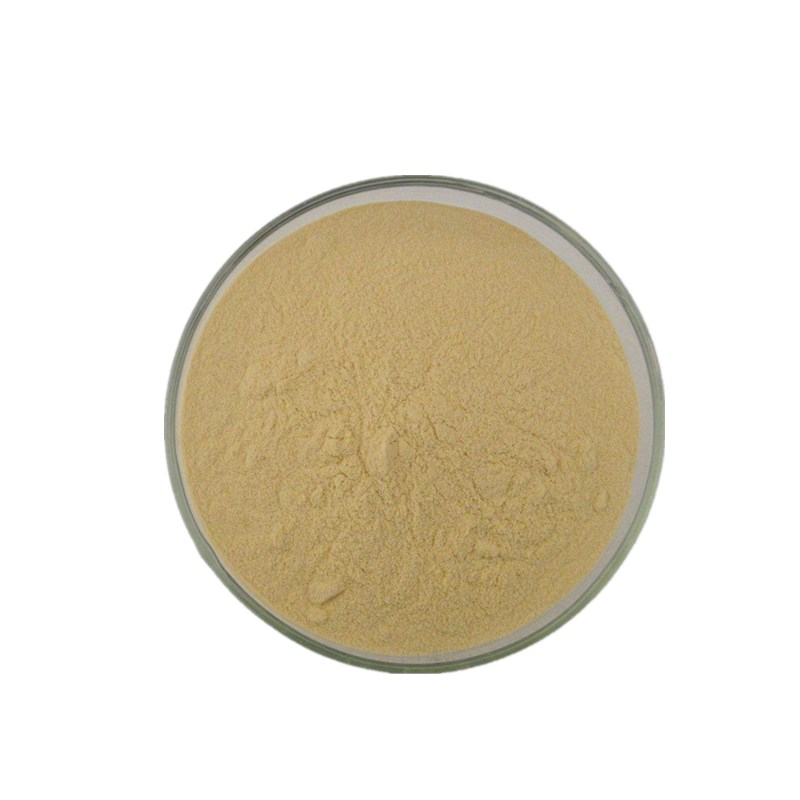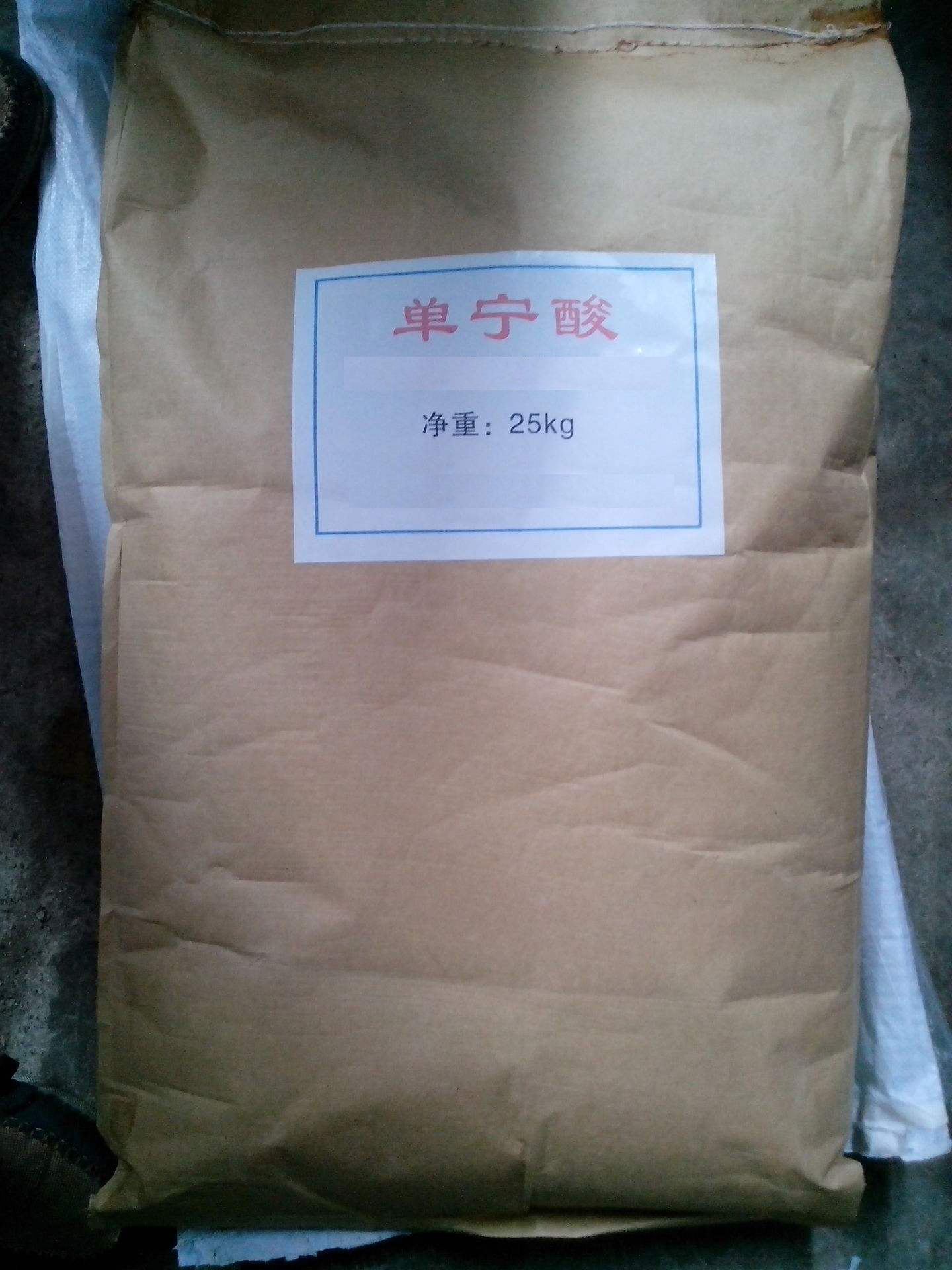Product Description
Tannic Acid CAS 1401-55-4
-
1401-55-4
-
4002
-
-
-
Light yellow or light brown powder
-
81%、90%、96%

Product name: Tannic Acid CAS 1401-55-4
Cas No.: 1401-55-4
Molecular Formula: C76H52O46
Molecular Weight: 1701.18
Type: Herbal Extract
Other names: Tannins / Tannin analysis / Sunlife TN
Description:
Tannic acid, also known as tannin or gallotannic acid, is a naturally occurring compound found in various plant tissues. It is a polyphenol and belongs to the group of compounds called tannins. Extracted from plants such as oak bark, gallnuts, and certain fruits, tannic acid is characterized by its astringent taste and protein-binding ability.
Tannic acid has diverse applications across industries. It possesses astringent properties suitable for skincare products, contributes to the tanning process in the leather industry, and forms colored complexes used in dyeing fabrics and producing inks. In traditional medicine, it is valued for its antimicrobial and antioxidant properties. Tannic acid is also significant in brewing and winemaking, enhancing the characteristics of red wines. Furthermore, it finds use as a chemical reagent in reactions within fields like photography, textiles, and metal processing.
Features:
1. Astringency: Tannic acid exhibits a strong astringent taste and has the ability to cause contraction and tightening of tissues..
2. Protein binding: Tannic acid has a high affinity for proteins and can form complexes with them, resulting in precipitation or coagulation.
3. Complexation with metal ions: Tannic acid can form stable complexes with metal ions, leading to its use in various applications involving metal chelation.
4. Antioxidant properties: Tannic acid exhibits antioxidant activity, which helps in protecting against oxidative damage caused by free radicals.
5. Biodegradability: Tannic acid is a natural compound derived from plant sources, and it is biodegradable, making it environmentally friendly.
6. pH-dependent solubility: Tannic acid's solubility can vary with pH, being more soluble in alkaline solutions and less soluble in acidic conditions.
7. Stability: Tannic acid is relatively stable under normal conditions and can withstand moderate heat and pH variations.
8. Compatibility with other ingredients: Tannic acid can interact and interact synergistically with other compounds, leading to enhanced effects in certain applications.
Applications:
1. Leather tanning: Tannic acid is widely used in the tanning industry as a key component in the process of converting animal hides into leather. It forms stable complexes with proteins, creating a durable and flexible material.
2. Dyeing and ink production: Tannic acid is used as a mordant in dyeing processes. It forms complexes with metal ions and helps fix dyes to fabrics, resulting in enhanced color fastness. It is also employed in the production of inks, where it aids in the formation of stable pigments.
3. Cosmetics and skincare: Due to its astringent properties, tannic acid is used in cosmetic formulations and skincare products. It can help in toning and firming the skin, reducing inflammation, and minimizing the appearance of pores.
4. Pharmaceuticals: Tannic acid has been used in traditional medicine for its antimicrobial and antioxidant properties. It is believed to have potential applications in wound healing, as well as in the treatment of burns, sore throat, and diarrhea.
5. Brewing and winemaking: Tannic acid naturally occurs in grapes and contributes to the color, flavor, and mouthfeel of wines, particularly red wines. It helps in stabilizing the wine and can also act as a natural preservative.
6. Food and beverages: Tannic acid is used in the food and beverage industry as a flavoring agent, particularly in products like chocolates, chewing gum, and certain beverages. It adds a characteristic bitter taste and can also help with clarifying and stabilizing certain beverages.
7. Chemical applications: Tannic acid finds applications in various chemical processes. It can be used as a reducing agent, metal chelator, and antioxidant in industries such as photography, textile dyeing, and metal processing.
Specifications:
|
Specification |
Industrial grade |
Pharmaceutical grade |
Food grade |
|
Appearance |
Yellow powder |
Light yellow powder |
Light yellow powder |
|
Content |
≥81% |
≥90% |
93%-98% |
|
Loss on drying |
≤9% |
≤9% |
≤9% |
|
Residue on ignition |
—— |
≤1% |
≤1% |
|
Heavy metal |
—— |
≤30ppm |
≤20ppm |
|
Other Index |
See COA |
See COA |
See COA |
Storage: Avoid moisture and light, sealed tightly, no contact with metal.
Shelf life: two years.
Package: 25kg/bag or as your particular request.
